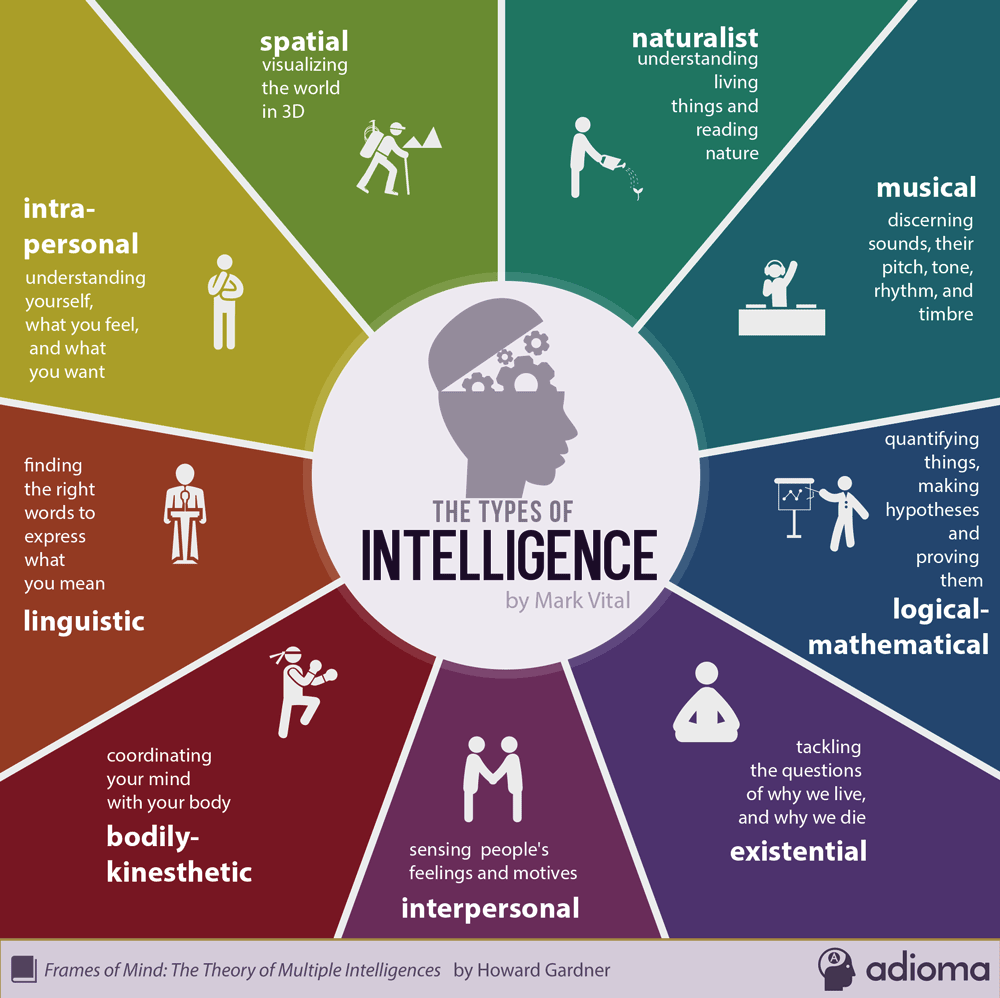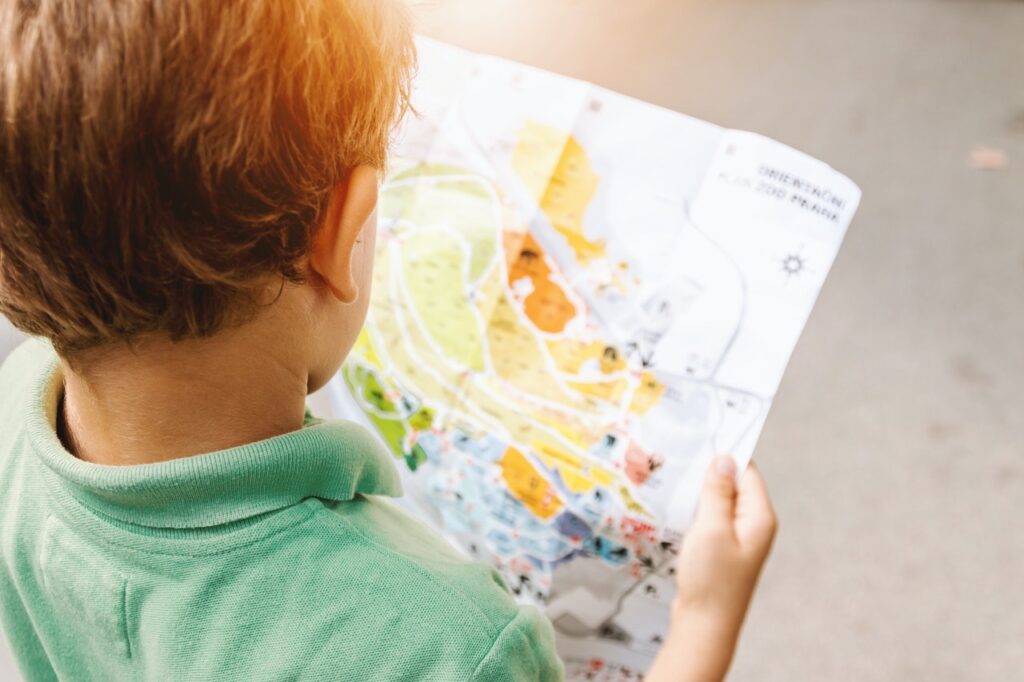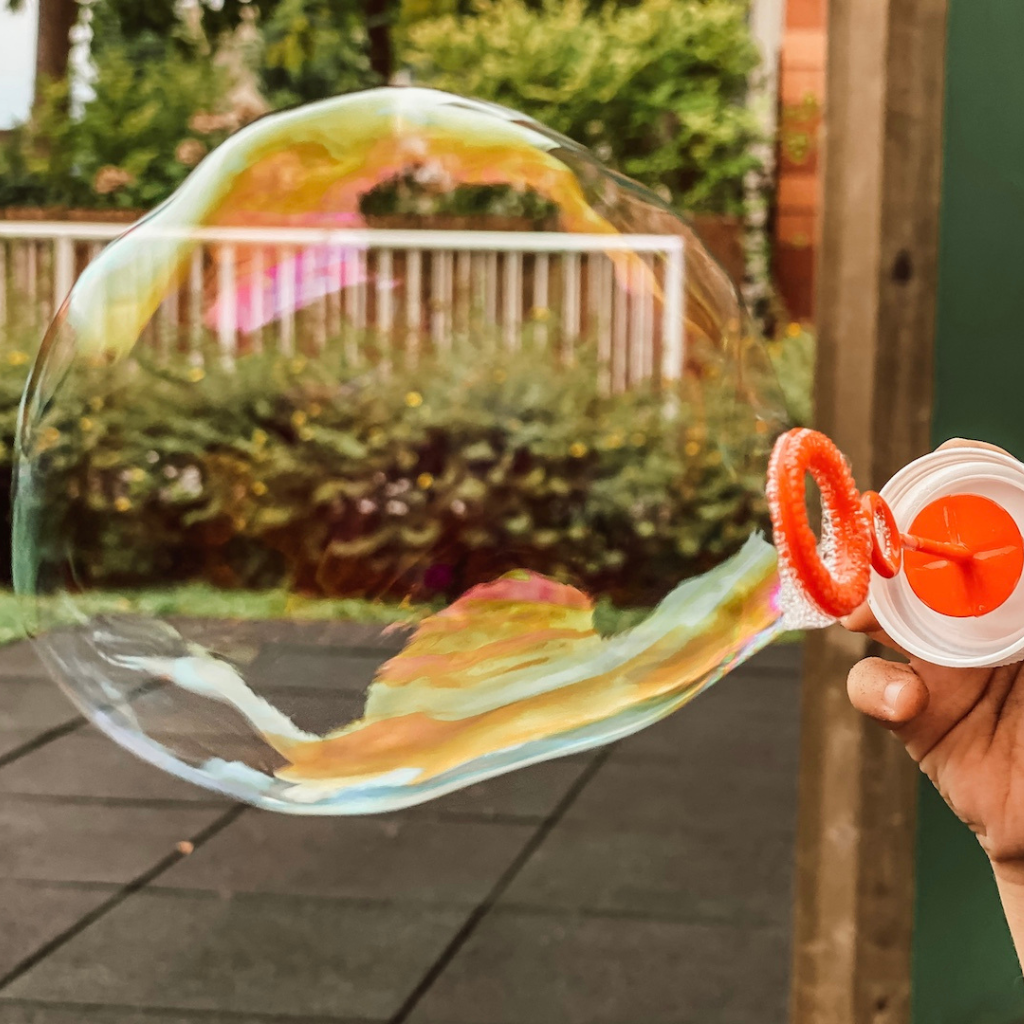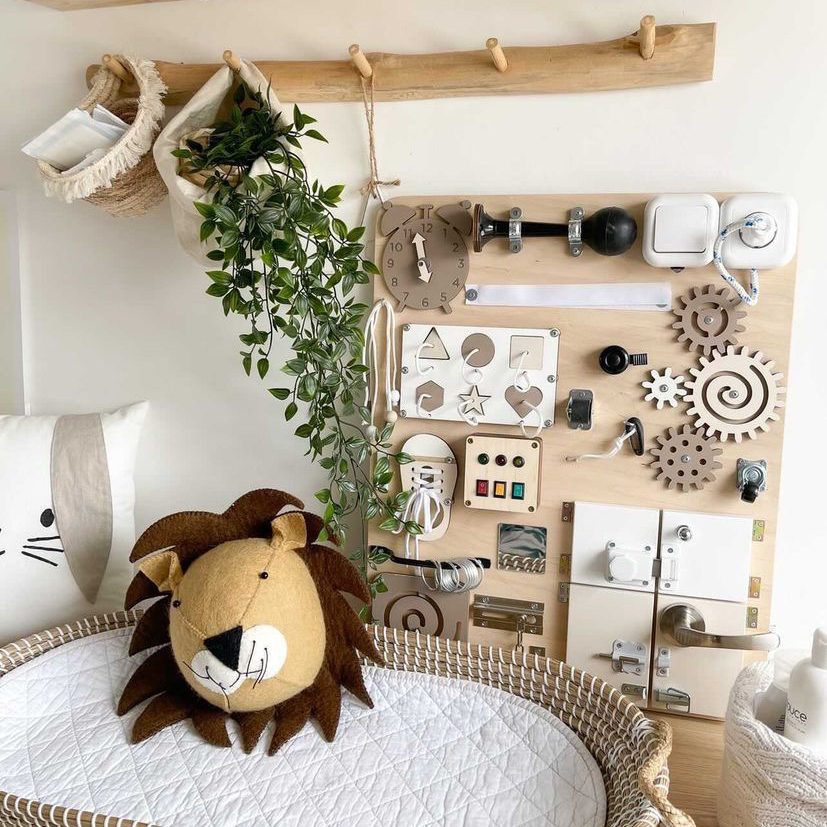Fostering Spatial Intelligence in Early Childhood to Help Children Thrive
With rapid advances in technology, globalisation and digitalisation, more focus should be given to spatial intelligence in early childhood development, homeschooling and traditional schooling. 3D printing technology, automation, NFTs or extraterrestrial exploration, just to name some trends – these are enablers in stretching out professional boundaries and creating new jobs. As responsible parents and concerned citizens in today’s world, we need to raise questions: is our education system agile and flexible enough to be constantly catching up with disruptive innovation? Do we prepare our children for tomorrow’s realities? How can we support the potential and talents of our children in the most sustainable ways?
Here we discuss why spatial intelligence is important, shed light on related future professions and existing gender gaps, how to spot struggles and focus on smart educational toys and daily activities to improve spatial ability.
1. Spatial intelligence – what is it?
Have you ever been amazed with some people who can easily navigate in unfamiliar places without a map? Do you have friends who are great in 3D illustrations? How do neurosurgeons skilfully visualise parts of the brain before conducting an operation! For scriptwriters and writers it is a must to live in the fantasy world full of images! All these traits belong to people with strong spatial abilities.
Spatial intelligence carries different connotations among neuropsychologists, psychologists and pedagogues. Yet, they all come down to one simple formulation – reasoning with images.
Spatial intelligence, also known as visual-spatial intelligence or spatial reasoning , is a complex cognitive ability to “generate, retain, retrieve, and transform well-structured visual images” in the brain (Lohman, 1993). In other words, it is a mental capacity to visualise objects and their shapes in 2D, 3D and 4D dimensions, process their spatial relations to other objects and manipulate them to form new spatial relations according to certain task objectives (Maier, 1994).
Spatial intelligence is one of the ninth intelligences that the brain can have. Right below in the succinct table, you can see the very famous Gardner’s Theory of Multiple Intelligences (2011), depicted by Mark Vital . Additionally, watch this short video about key characteristics of these nine autonomous facets of intelligence.
By the way, just because some have a higher score in an IQ test, it does not imply that they are equally good in spatial reasoning or that all their nine intelligences are super developed (Diezmann & Watters, 2000; Hindal, 2014). As a matter of fact, traditional IQ tests are “content-neutral” and focus on such academic fields as mathematics, physics, history and linguistics (Hindal, 2014, p. 562).
2. Start training spatial intelligence early
Spatial intelligence is not an inborn skill. Like any other intelligence, it should naturally pass 4 trajectories of human development (Gardner, 1993). In their infancy babies’ brains are gradually trying to make sense of how their bodies relate to the world around them… “Between”, “on”, “in”, “behind” – learning this spatial language is a difficult task for young children . Once children grasp these concepts, they move to more advanced challenges in mathematics, geometry, etc. Development of spatial awareness slows down during adolescence. However, it can be further developed and transformed over the course of life at different ages (Maier, 1999).
It is actually a very hard process for children to mentally imagine and rotate images.
Let’s say we have 5 building blocks in different colours and a task card. The goal of the child is to replicate the pattern of the card onto the physical space using these 5 blocks.
The brain of the child needs to switch between 2 dimensional, 3 dimensional and even 4 dimensional representations of these images. In search for the right solution, a dimensional interplay happens, causing cognitive “disequilibrium” (Piaget, 1963). Thanks to this hard work in the brain, the child hones understanding of spatiality (Kriesberg, Northrup & Thorson, 1989).
2.1. Early interventions matter
Small preschool children absorb and process information much more effectively than later in life (Heckman & Masterov, 2007; Yang et al., 2020). Indeed, at this age the brain continuously works with simpler, banal concepts (as the eye of a grown-up may perceive it). However, what builds the inner logic or the inner voice of the child is this particular accumulation of these banal experiences:
The more the child trains in spatial reasoning, the more the child performs mental rotations and manipulations. As a result, more spatial analogies are built – visually, symbolically and diagrammatically.
Stored visual information “in pictures” in the long-term memory is stronger than verbal information (Hitch et al., 1989; Snodgrass et al., 1972). Later at school, the child tends to retrieve past representations (aka “pictures”) and “apply” them to new tasks accordingly. Consequently, thanks to a variety of smart tools in early childhood, children grow cognitive speed and flexibility to switch from one mental manipulation to another.
This shows that spatial ability is accumulative, durable and transferrable (Cheng & Mix, 2014; Bower et al., 2020; Ribeiro et al., 2020; Thomson et al., 2020). Thus, it is critical to incorporate spatial development as early as possible (Gersmehl & Gersmehl, 2007; Gunderson et al., 2012; Yang et al., 2020).
In preschool years, visual-spatial training and its further enhancement are the foundation and predictor to:
- Succeed in STEAM fields : science, technology, engineering, mathematics and the visual arts (eg, Ben-Chaim, Lappan & Houang, 1989; Wasserman, 1992; Wai, Lubinski & Benbow, 2009; Gunderson, et al., 2012; Uttal et al 2013; Stieff & Uttal 2015; Temple et al 2020)
- Be innovative, creative and original
- Master navigational skills, at drawing maps (Liben et al., 2013), at locating and visualizing patterns
- Outperform in problem-solving situations (Rafi et al., 2005)
- Carry out executive functions (Lehmann, Quaiser-Pohl & Jansen, 2014; Frick & Baumeler, 2017)
- Enhance musical abilities (Soluki et al., 2021)
Quite an important note:
Spatial intelligence is a complex construct . It is hierarchical, multi-leveled – it has many sub-skills. This means that a person can excel in navigational skills, nevertheless he or she may fail with visualization skills. And even here, with practice, it is possible to promote the latter – across all age groups (Uttal et al., 2013).
2.2. Boys vs Girls: dominance in fostering spatial awareness
Yes, yes, it is a reality… empirical evidence suggests that boys tend to score higher on spatial tests than girls (Levine et al., 2005; Quinn & Liben, 2008). As a result, in professional careers males outnumber female candidates in STEM fields. Already in infancy, boys simply accelerate in exploration (Moore & Johnson, 2008; Quinn & Liben, 2008). Some link theses to dissimilar adaptability to the environment and innate cognitive traits between girls and boys. Namely, girls tend to be more analytical and pay more attention to manipulation with details of images, whereas boys seem to perceive, mentally rotate and retrieve information faster (Voyer, Voyer & Bryden, 1995; Jaušovec & Jaušovec, 2012; Maeda & Yoon, 2013). As a matter of fact, children (of both genders) with low-socioeconomic backgrounds tend to have lower spatial intelligence (Tepylo, Moss & Hawes, 2014). Hence, this could also be a factor to influence development of spatial intelligence among girls.
The good news is girls, aged 0-8 years, can improve their spatial reasoning if started early (Casey et al., 2008; Tepylo, Moss & Hawes, 2014).
Let’s narrow down this cognitive gender gap! Learning through play with puzzles and blocks is a good start for girls!
3. Particular importance of spatial awareness in future professions
Never in the history of mankind has the world been transforming exponentially in such a short period of time as in the last 50 years. Increase in technological advancements has taken over many menial jobs. In the modern society we are already witnessing high demands for skills in:
- Electronic communications and social media
- Genetics and molecular biology
- Artificial intelligence and virtual reality
- Quantum cloud computing
- Smart gadgets and applications
- Nuclear engineering
- Robotics, machinery, automation and mechanical engineering
- Blockchain technology (ie, cryptocurrency, NFT)
- 3D technology
- Medicine and surgical care
- Aviation and planetary science
- Astrobiology and Astrobotany
- Arts (ie, graphic design, illustrations) and cinematography
- Organic chemistry
- Architectural and structural geology, etc.
- Mindfulness and healing meditation practice, energy therapy (e.g. Reiki)
Let’s be honest here – these are spatial intelligence jobs of the future. In order to succeed in these trajectories of professions, it is critical to hone spatial ability and its related sub-skills in childhood to prepare the next generations for their holistic existence in society, success in careers and life (Soluki et al., 2021; Ishikava & Newcombe, 2021).
Do your children already know what they want to do in life? 😉
4. Spatially enriched environment: formula of smart stimuli
Environment plays an important role in the development of spatial skills (Diezmann & Watters, 2000; Matthews & Geist, 2002; Ehrlich, Levine & Goldin-Meadow, 2006; Newcombe & Frick, 2010; Yang, 2020). Indeed, we daily live and interact within dimensional spaces. However, transmission of information and knowledge mostly come from “the endless flatland of paper and video screen” that we need to digest (Tufte, 1990, p.12). Therefore, we should surround children with opportunities :
- Identify children at risk early and promote their spatial intelligence – to increase chances for academic success.
- Provide different types of learning environments: formal and informal (Diezmann & Watters, 2000).
- Ensure children regularly receive instructional guidance when cognitively working with two- and three-dimensional spatial representations – using the spatial language (Diezmann & Watters, 2000).
- Surround with parental support . When parents help children to build blocks and patterns along with guided instructions, children later tend to improve spatial vocabulary and grasp mathematical concepts faster (Ribeiro et al., 2020; Thomson et al., 2020).
- Give access to a variety of smart toys , learning tools and educational activities (Ehrlich, Levine & Goldin-Meadow, 2006; Newcombe & Frick, 2010; Yang et al., 2020).
Important side note. Giftedness does play a role in overall achievement of children. However, it is the holistic approach to systematic exercising of the brain in early years that matters. Thanks to accumulated past experiences, children perform mental rotations faster and successfully apply “recall skills” in order to find a solution (Hidal, 2014).
4.1. Struggles and deficits with spatial awareness
Speaking of potential risks and struggles – some children may, unfortunately, encounter them. The most crucial thing to do is to recognise signs early and act upon the problem.
For example, due to such neurological and developmental disorders as:
- Autism, cerebral palsy, Turner syndrome, non-verbal learning disorder (NVLD), dyspraxia, sensory processing disorder (SPD), developmental coordination disorder (DCD), attention deficit hyperactivity disorder (ADHD), etc.
And here is a list of signs to recognise potential deficits and challenges in spatial ability:
- Difficult to understand symbols (in diagrams, maps, charts, graphs, games)
- Problems at school with maths (ie, spatial acalculia – inability to perform calculations), writing (ie, vertical direction instead of horizontal; grammar) and reading (ie, misspelling, punctuation – not perceiving necessary pauses in speech; not tracking meaning of words through the text; not understanding the storyline)
- Troubles with motor skills: unaligned bilateral coordination, clumsiness, inability to properly kick, throw or catch the ball, stumbling over objects
- Hardship with navigation: left vs right, up vs down
- Unbalanced eye-hand-body coordination (poor postural control, missing mouth with a utensil during self-feeding)
- Poor understanding of the spatial language: voice instructions
- Difficulty with respect for personal physical space
4.2. Visionaries of the past are the stars of the future
Have you heard of these “disobedient” kiddos from the past? Apparently, a lot of famous scientists, mathematicians and physicists were struggling at school. Case in point, Diezmann & Watters (2000) point out 3 biographies from the book by Dr. MacFarlane-Smith “Spatial Ability. Its Educational and Social Significance” (1964):
- For example, the British inventor Richard Trevithick was insubordinate and even illiterate. Yet, he invented self-propelled machinery. Thank you, Richard Trevithick, for today’s cars and trains!
- Another example of Évariste Galois , who would constantly argue with his teachers and pals. Namely, because Galois preferred to do the whole mathematical analysis in his head without breaking it down into details. This frustrated and irritated his pedagogues. Nevertheless, he turned out to be a mathematical genius.
- Or the very brilliant Albert Einstein would skip and eventually quit his school early because it was too boring, too instructional, and uninspiring.
What was common between these 3 stories? Trevithick, Galois and Einstein were not able to successfully operate on environmental cues of the traditional formal schooling settings (Diezmann & Watters, 2000). They were creative thinkers with high spatial intelligence (Diezmann & Watters, 2000). They had differing cognitive styles to process information (Hashway, 1998). The school systems failed to capitalise on strong visual-spatial ability. As a matter of fact, the traditional system was based on verbal communications and texts (Haas, 2003). Look at Albert Einstein – he could operate and communicate using “images” (ie, maps, models) in his head, whereas “words” were rather secondary to elaborating something (Diezmann & Watters, 2000).
4.3. Are you and your children visual-spatial learners, auditory-sequential learners or have grown into an adapted fusion of both?
We, human beings, are unique. We use different cognitive styles to acquire new information and solve a problem. As a result, we have different learning styles . Just an example, with a rough number from a study for age groups 9 and 13 years: 1/3 of the population is strongly visual-spatial, whereas ONLY 1/4 is strongly auditory-sequential (Haas, 2003).
Visual-spatial and auditory-sequential children perceive the world differently (adapted from Silverman, 1999):
| AUDITORY SEQUENTIAL CHILDREN | VISUAL SPATIAL CHILDREN |
| Word oriented | Image oriented |
| Enjoy word games | Enjoy jigsaw puzzles |
| Understand semantics | Understands visuals |
| Process information step by step | Need to see the bigger picture |
| Appreciate time limits | Feel pressured under time limits |
| Prefer to learn from easy to difficult | Prefer to grasp complex concepts |
| Follow oral instructions well | Read maps well |
| Pay attention to details | May miss details; need to see the bigger picture first |
| analysis information | synthesis information |
| Prefer neat hand-writing | Prefer keyboarding |
| Auditory short term memory | Long-term visual memory |
| Tend to have high grades | Tend to have uneven grades |
| Learn from the given instructions | Learn from own developed methods |
| Acquire languages in a classroom | Acquire languages through visual & physical immersion |
| Algebra, chemistry | Geometry, physics |
| Gifted in academic fields | Gifted emotionally, spiritually, mechanically, technologically |
| Satisfied with one correct answer | Seek innovative solutions to problems |
| Objective: tend to accept critic easily | Subjective: tend to be sensitive to teachers’ comments |
| Prefer drill and repetition during learning | Learn concepts permanently |
Which type are you? How would you relate to your child?
And remember: differences are not hopeless deficits. We identify these differences, capitalise on them and turn them into strengths. This way we minimise potential struggles in the future with this preventive effort.
5. Current schooling support of spatial intelligence
Indeed. In the last ten years there has been a visible progress in varieties of visual teaching and learning tools used in classrooms – be it at language courses, at schools or universities (Hyerle, 1996). Thanks to computerized presentations, videos and illustrations, the tasks and voice of the speaker can now be associated with images. As a result, learners absorb information effectively, in more enjoyable ways. It sounds great, doesn’t it? The kids seem to be all perfectly set at schools… no worries here… However. This is only for subject-related discussions to transmit new information. And if cognitive styles of children and students are congruent with the methods of classrooms then perceived information should potentially convert into knowledge and settle down into the long-term memory.
However. Our latest findings confirm that nurseries, kindergarten and school systems are still not paying enough attention to foster spatial thinking (Bruce, Flynn & Moss, 2012; Moss et al., 2016; Sarama & Clements, 2009). It is neglected , “undervalued and under-taught” (Temple et al. 2020).
6. Smart toys and fun activities to promote development of spatial intelligence
So instead of waiting until educational institutions adapt and/or extend curricula, there are many auxiliary activities that parents can incorporate into daily lives.
Food for thought: during summer/long holidays, spatial abilities of children tend to slow down (Huttenlocher, Levine & Vevea, 1998).
Scroll below to explore a wide range of smart toys and fun activities , incorporate them and do not forget to:
- Compose your own program for your child
- Exercise 5-20 mins a day, weekly or bi-weekly – just ensure your child’s brain is regularly challenged
- Intuitively allocate toys and activities: for instance, maybe some toys are best to play with the child during travel, some are better for your shelves on a rotational basis
6.1. Smart toys to hone spatial intelligence – offered by NeuroToys
- For little hands MONTESSORI BUSYBOARDS
- EDUCATIONAL GAME “PANORAMA. CONSTRUCTION SITE”
- 3D WOODEN CYLINDER BLOCKS
- ASTUBLOK GAME
- COLORFUL BLOCK BUDDIES
- MAGNETS TRAFFIC
- COLORFUL TANGRAM
- MOSAICS
- PUZZLES
- TETRIS WOODEN BATTLE
- Especially for teenagers and grown-ups, seek whimsy figure puzzles
- And, of course, CONSTRUCTION BLOCKS AND PLANKS
- 3D MODEL BUILDING for kids
- 3D MODEL BUILDING for teenagers and adults
6.2. Other smart activities to improve spatial intelligence
- 3D mechanical building and construction toys: wooden blocks and planks, LEGO blocks
- Tangrams, origami, 3D puzzles, jigsaw puzzles, figure puzzles, solve mazes, make mosaics and patterns
- Coding & robotics
- Play Rubik’s Cube and Tetris
Read maps and perform mapping
- Encourage to draw a map from home to school, a layout of the house, the playground, the supermarket
Use spatial vocabulary
- Use words during block play: above, below, in front of, next to, etc. Name objects and their allocation: “The blue block should be under the red one next to the green block.”
- Use spatial words in everyday interactions
- Give instructions: “… bring me a blue scarf on the top shelf in the wardrobe…”
Teach to use gestures
- Gestures are powerful tools for communication and learning. Research shows that children learn best when teachers use gestures for an explanation.
- When children use gestures to represent the movement of objects, their spatial reasoning ability improves. Even when they are asked to supplement their verbal responses with gestures.
Paint, draw sketches and diagrams, and illustrate
- On paper
- Digital, for example, using applications through reMarkable, iPad, etc.
Teach to visualise
- It is a powerful skill in spatial reasoning and problem solving to imagine an object that is not physically present.
- For example, young children often have a ‘gravity shift’. In an experiment where a ball falls down a twisted tube, preschoolers tend to think that it will appear directly below. But when they are asked to imagine the end result, more children give the correct answer.
Teach matching games
- Start with a simple structure using building blocks, then ask children to match them by shape or colour. Increase the difficulty over time with tangrams, mosaics, etc.
Engage in board games
- Chess, Munchkin, Monopoly, Carxasson, Jenga, Underwood, Dixit, Citadels, Tokaido, Terror of Arkham, Ancient Terror, Robinson Crusoe, The Colonisers, Pandemic, Dominion, Train Ticket
Play PC video games
Reasonably, when the time for children comes :). Non-violent, limited and structured screen time. There are a lot of beneficial popular video games. Consider:
- Minecaft, Civilization, Starcraft, XCOM
Play games on mobile phones
- Monument Valley, Blek, 2048, Har-mo-ny, KAMI, Thomas was alone
Sports and physical activity
- Basketball, baseball, soccer
- Biking, swimming, running around the yard
- Climbing and crawling
- Balancing exercises
- Visit or build an obstacle course
- Finding a way in unfamiliar places
Gymnastics, dance and movement songs
- These activities come along with instructions, emotions, a sense of inclusion, body awareness in the space, creativity, socialisation, problem-solving, and gross motor skills – engaging both hemispheres of the brain (Temple et al., 2020).
7. Concluding main points on spatial intelligence
As we see simple activities help children develop a strong sense of spatial awareness. If children build a basis in their early years, they are likely to achieve successful self-realisation in life. We, adults, give children smart opportunities. We stimulate them musically, cognitively, artistically and physically to encourage their learning about spatiality. Spatial intelligence is cumulative, durable and transferrable. Thus, the more boys and girls engage in a variety of smart toys and activities, the more virtuous they become in visual-spatial reasoning.
The key message from NeuroToys here is to gently alert parents to constantly reflect on the progression of spatial abilities.
Let’s brighten up the talents of children early! 😊
8. REFERENCES
A-F
Ben-Chaim, D., Lappan, G. & Houang, R. (1989) ‘Adolescents’ Ability to Communicate Spatial Information: Analyzing and Effecting Student’s Performance’. Educational Studies in Mathematics, 20 (2), pp. 121-146.
Bower, C., Zimmermann, L., Verdine, B., Toub, T. S., Islam, S., Foster, L., et al. (2020) ‘Piecing Together the Role of a Spatial Assembly Intervention in Preschoolers’ Spatial and Mathematics Learning: Influences of Gesture, Spatial Language, and Socioeconomic Status’. Dev. Psychol. 56, pp. 686-698.
Bruce, C., Flynn, T. & Moss, J. (2012) Early Mathematics: Challenges, Possibilities and New Directions in the Research (Mathematics for Young Children: Literature Review). Comprehensive literature review submitted to the Literacy and Numeracy Secretariat, Ontario Ministry of Education. Toronto, Ontario, Canada.
Casey, B., Erkut, S., Ceder, I. & Young, J. (2008) ‘Use of a Storytelling Context to Improve Girls’ and Boys’ Geometry Skills in Kindergarten’. Journal of Applied Developmental Psychology, 29, pp. 29-48.
Cheng, Y.L. & Mix, K.S. (2014) ‘Spatial Training Improves Children’s Mathematics Ability’. Journal of Cognition and Development. 15, pp. 2-11.
Diezmann, C.M. & Watters, J.J. (2000) ‘Identifying and Supporting Spatial Intelligence in Young Children’. Contemporary Issues in Early Childhood, 1 (3), pp. 299-313.
Ehrlich, S.B., Levine, S.C., & Goldin-Meadow, S. (2006) ‘The Importance of Gesture in Children’s Spatial Reasoning’. Dev. Psychol., 42, pp. 1259-1268.
Frick, A. & Baumeler, D. (2017) ‘The Relation between Spatial Perspective Taking and Inhibitory Control in 6-year-old Children. Psychol. Res., 81, pp. 730-739.
G-J
Gardner, H. (1993) Multiple Intelligences: The Theory in Practice. New York: Basic Books.
Gardner, H. (2011) Frames of mind: The Theory of Multiple Intelligences. New York: Basic Books.
Gersmehl, P.J., & Gersmehl, C.A. (2007) ‘Spatial Thinking by Young Children: Neurologic Evidence for Early Development and “Educability”’. J. Geograp. 106, pp. 181-191.
Gunderson, E., Ramirez, G., Beilock, S., & Levine, S. (2012) ‘The Relation between Spatial Skill and Early Number Knowledge: The Role of the Linear Number Line’. Developmental Psychology, 48 (5), pp. 1229-41. In: The University of Chicago: Department of Psychology and Committee on Education.
Haas, S. (2003) ‘Classroom Identification of Gifted Visual-spatial Learners’. Gifted Education Communicator (Spring), 34 (1), pp. 19-21.
Hashway, R. (1998) Developmental Cognitive Styles: A Primer to the Literature Including an Introduction to the Theory of Developmentalism. San Francisco: Austin and Winfield publishers.
Heckman, J.J. & Masterov, D.V. (2007) ‘The Productivity Argument for Investing in Young Children’. Rev. Agricult. Econ., 29, pp. 446-493.
Hindal, H.S. (2014) ‘Visual-Spatial Learning: A Characteristic of Gifted Students’. European Scientific Journal, 10 (13), pp. 557-574.
Huttenlocher, J., Levine, S., & Vevea, J. (1998) ‘Environmental Input and Cognitive Growth: A sStudy Using Time-period Comparisons’. Child Development, 69 (4), pp. 1012-1029.
Hyerle, D. (1996) Visual Tools for Constructing Knowledge. ASCD (Association for supervision and curriculum development). USA
Hitch, G., Halliday, M. Dodd, A., & Littler, J.E. (1989) ‘Item Identification Time and Rehearsal Rate as Predictors of Memory Span in Children’. Quarterly Journal of Experimental Psychology, 41 (A), pp. 321-328.
Ishikava, T. & Newcombe, N.S. (2021) ‘Why Spatial is Special in Education, Learning, and Everyday Activities’ . Cognitive Research: Principles and Implications, 6 (20), pp. 1-5.
Jaušovec, N. & Jaušovec, J. (2012) ‘Sex Differences in Mental Rotation and Cortical Activation Patterns: Can Training Change Them?’. Intelligence, 40 (2), pp. 151-162.
K-M
Kriesberg, L., Northrup, T.A. & Thorson, S.J. (1989) Intractable conflicts and their transformation. 1st ed. Syracuse, NY: Syracuse University Press.
Lehmann, J., Quaiser-Pohl, C., & Jansen, P. (2014) ‘Correlation of Motor Skill, Mental Rotation, and Working Memory in 3-to 6-year-old Children’. Europ. J. Dev. Psychol., 11, pp. 560-573.
Levine, S. C., Vasilyeva, M., Lourenco, S. F., Newcombe, N. S., & Huttenlocher, J. (2005) ‘Socioeconomic status Modifies the Sex Difference in Spatial Skill’. Psychol. Sci. 16, pp. 841-845.
Liben, L.S., Myers, L.J., Christensen, A.E., & Bower, C.A. (2013) ‘Environmental-scale Map Use in Middle Childhood: Links to Spatial Skills, Strategies, and Gender’. Child Development, 84, pp. 2047-2063.
Lohman, D. (1993) ‘Spatial ability and G. Paper presented at the first Spearman seminar’. UK: University of Plymouth. http://citeseerx.ist.psu.edu/viewdoc/download?doi=10.1.1.111.7385&rep=rep1&type=pdf
Maeda, Y. & Yoon, S. Y. (2013) ‘A Meta-analysis on Gender Differences in Mental Rotation Ability Measured by the Purdue Spatial Visualization Tests: Visualization of Rotations (PSVT: R)’. Educ. Psychol. Rev., 25, pp. 69–94.
MacFarlane-Smith, I. (1964) Spatial Ability: Its Educational and Social significance. London: University of London Press.
Maier, P. (1994) Räumliches Vorstellungsvermögen: Komponenten, geschlechtsspezifische Differenzen, Relevanz, Entwicklung und Realisierung in der Realschule. Frankfurt am Main, Germany: Peter Lang.
Maier, P. (1999) ‘Raumgeometrie mit Raumvorstellung: Thesen zur Neustrukturierung des Geometrieunterrichts’. Der Mathematikunterricht, 45 (3), pp. 4-18.
Matthews, D. & Geist, E.A. (2002) ‘Technological Applications to Support Children’s Development of Spatial Awareness’, Information Technology in Childhood Education Annual (2002), pp. 321-336.
Moore, D.S. & Johnson, S.P. (2008) ‘Mental Rotation in Human Infants: A Sex Difference’. Psychol. Sci. 19, pp. 1063-1066.
Moss, J., Bruce, C.D., Caswell, B., Flynn, T. & Hawes, Z. (2016) Taking Shape: Activities to Develop Geometric and Spatial Thinking. Toronto, CA: Pearson Canada, Inc.
N-S
Newcombe, N.S. & Frick, A. (2010) ‘Early Education for Spatial Intelligence: Why, What, and How. Mind Brain Educ., 4, pp. 102-111.
Piaget, J. (1963) The child’s Conception of Space. London: Routledge & Paul.
Quinn, P.C. & Liben, L.S. (2008) ‘A Sex Difference in Mental Rotation in Young Infants’. Psychol. Sci. 19, pp. 1067-1070.
Rafi, A., Anuar, K., Samad, A., Hayati, M., & Mahadzir, M. (2005) ‘Improving Spatial Ability Using a Web-based Virtual Environment (WbVE)’. Autom. Constr., 14, pp. 707-715.
Ribeiro, L.A., Casey, B., Dearing, E., Nordahl, K. B., Aguiar, C., & Zachrisson, H. (2020). Early Maternal Spatial Support for Toddlers and Math Skills in Second Grade. Journal of Cognition and Development. 21, pp. 282-311.
Sarama, J. & Clements, D. (2009) ‘Building Blocks and Cognitive Building Blocks: Playing to Know the World Mathematically’. American Journal of Play, 1, pp. 313-337.
Silverman, L.K. (1999) From Upside-Down Brilliance: The Visual-Spatial Learner. Denver: DeLeon Publishing.
Silverman, L. K. (2002) Upside-Down Brilliance: The Visual-Spatial Learner. Denver: DeLeon Publishing.
Snodgrass, J. Volvovitz, R. & Walfish, E. (1972) ‘Recognition Memory for Words, Pictures, and Words Plus Pictures. Psychonomic Science, 27, pp. 345-347.
Soluki. S., Yazdani, S., Arjmandnia, A.A, Fathabadi, J., Hassanzadeh, S. & Nejati, V. (2021) ‘Comprehensive Assessment of Spatial Ability in Children: A Computerized Tasks Battery’. Advances in Cognitive Psychology, 17 (1), pp. 38-48.
Stieff, M. & Uttal, D. (2015) ‘How much can Spatial Training Improve STEM Achievement? Educ. Psychol. Rev. 27, pp. 607-615.
T-Z
Temple, B.A., Bentley, K., Pugalee, D.K., Blundell, N. & Pereyra, C.M. (2020) ‘Using Dance & Movement to Enhance Spatial Awareness Learning’. Athens Journal of Education, 7 (2), pp. 153-168.
Tepylo, D. H., Moss, J. & Hawes, Z. (2014; forthcoming) ‘Spatial reasoning: Considerations for Mathematics Educators’.
Thomson, D., Casey, B.M., Lombardi, C.M., & Nguyen, H.N. (2020) ‘Quality of Fathers’ Spatial Concept Support During Block Building Predicts their Daughters’ Early Math Skills – But not their Sons’. Early Child. Res. Q, 50, pp. 51-64.
Tufte, E. (1990). Envisioning information. Cheshire, CT: Graphic Press.
Uttal, D., Meadow, N., Tipton, E., Hand, L., Alden, A., Warren, C., & Newcombe, N. (2013) ‘The Malleability of Spatial Sills: A Meta-analysis of Training Studies’. Psychological Bulletin, 139 (2), pp. 352-402.
Voyer, D., Voyer, S. & Bryden, M.P. (1995) ‘Magnitude of Sex Differences in Spatial Abilities: A Meta-analysis and Consideration of Critical Variables’. Psychol. Bull, 117, pp. 250-270.
Wai, J., Lubinski, D., & Benbow, C. P. (2009) ‘Spatial Ability for STEM Domains: Aligning over 50 Years of Cumulative Psychological Knowledge Solidifies its Importance’. J. Educ. Psychol., 101, pp. 817-835.
Wasserman, S. (1992) ‘Serious Play in the Classroom: How Messing around can Win you the Nobel Prize, Early Childhood Education. In: annual edition, pp. 202-208. Wheaton MD: Association for Childhood Education International.
Yang W, Liu H, Chen N, Xu P & Lin X (2020) ‘Is Early Spatial Skills Training Effective? A Meta Analysis’. Frontiers in Psychology , 11, Art. 1938, pp. 1-15.













